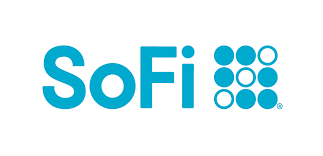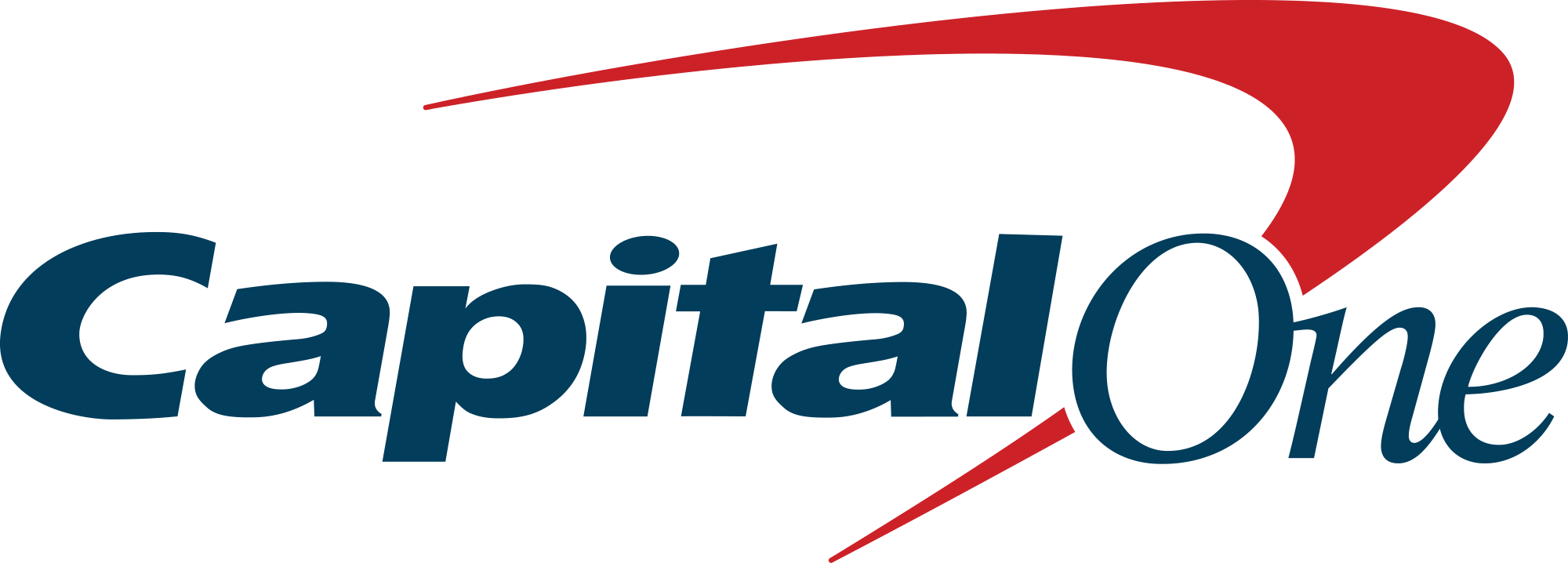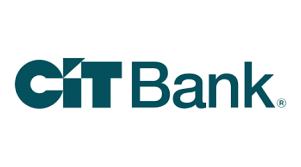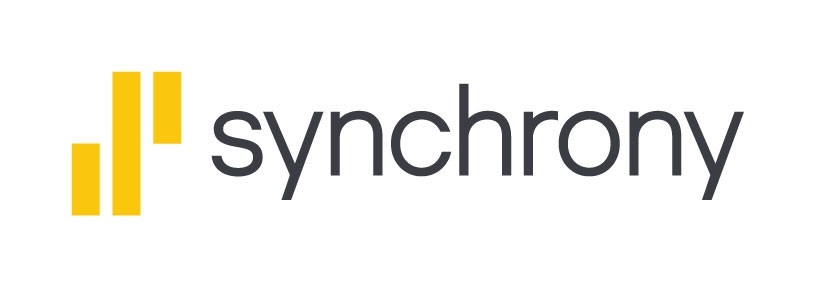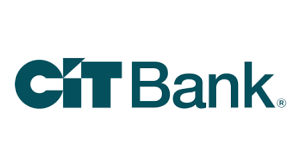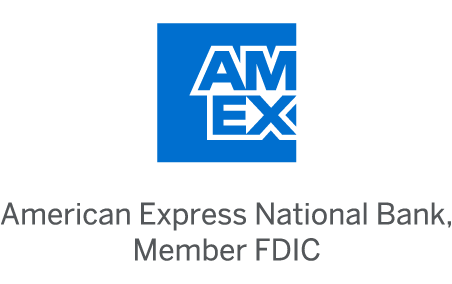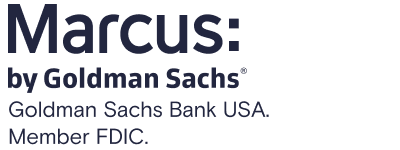Opening a high-yield savings account is the number one money tip I've been giving my friends and family in 2024. Plus, they've only gotten more attractive as savings account interest rates are close to 20+ year highs.
All of the accounts here have APYs that are about 10X the national average savings account interest rate, and all are FDIC insured up to $250,000. Check out our picks for the best high-yield savings accounts below.
Show Best Offers Available in
| Offer | APY | Minimum to Earn APY | Rating | Promotion | Next Steps |
|---|---|---|---|---|---|
|
SoFi Checking and Savings
Member FDIC.
Rating image, 4.75 out of 5 stars.
4.75/5
Our ratings are based on a 5 star scale.
5 stars equals Best.
4 stars equals Excellent.
3 stars equals Good.
2 stars equals Fair.
1 star equals Poor.
We want your money to work harder for you. Which is why our ratings are biased toward offers that deliver versatility while cutting out-of-pocket costs.
|
up to 4.60%
Rate info
You can earn the maximum APY by having Direct Deposit (no minimum amount required) or by making $5,000 or more in Qualifying Deposits every 30 days. See SoFi Checking and Savings rate sheet at: https://www.sofi.com/legal/banking-rate-sheet.
Min. to earn: $0
|
Rating image, 4.75 out of 5 stars.
4.75/5
Our ratings are based on a 5 star scale.
5 stars equals Best.
4 stars equals Excellent.
3 stars equals Good.
2 stars equals Fair.
1 star equals Poor.
We want your money to work harder for you. Which is why our ratings are biased toward offers that deliver versatility while cutting out-of-pocket costs.
|
$0
|
New customers can earn up to a $300 bonus with qualifying direct deposits!
|
Offer Alert
New customers can earn up to a $300 bonus with qualifying direct deposits!
|
|
Capital One 360 Performance Savings
Member FDIC.
Rating image, 4.75 out of 5 stars.
4.75/5
Our ratings are based on a 5 star scale.
5 stars equals Best.
4 stars equals Excellent.
3 stars equals Good.
2 stars equals Fair.
1 star equals Poor.
We want your money to work harder for you. Which is why our ratings are biased toward offers that deliver versatility while cutting out-of-pocket costs.
|
4.25%
Rate info
See Capital One website for most up-to-date rates. Advertised Annual Percentage Yield (APY) is variable and accurate as of April 10, 2024. Rates are subject to change at any time before or after account opening.
Min. to earn: $0
|
Rating image, 4.75 out of 5 stars.
4.75/5
Our ratings are based on a 5 star scale.
5 stars equals Best.
4 stars equals Excellent.
3 stars equals Good.
2 stars equals Fair.
1 star equals Poor.
We want your money to work harder for you. Which is why our ratings are biased toward offers that deliver versatility while cutting out-of-pocket costs.
|
$0
|
N/A
|
|
|
CIT Platinum Savings
Member FDIC.
Rating image, 4.75 out of 5 stars.
4.75/5
Our ratings are based on a 5 star scale.
5 stars equals Best.
4 stars equals Excellent.
3 stars equals Good.
2 stars equals Fair.
1 star equals Poor.
We want your money to work harder for you. Which is why our ratings are biased toward offers that deliver versatility while cutting out-of-pocket costs.
|
5.05% APY for balances of $5,000 or more
Rate info
5.05% APY for balances of $5,000 or more; otherwise, 0.25% APY
Min. to earn: $100 to open account, $5,000 for max APY
|
Rating image, 4.75 out of 5 stars.
4.75/5
Our ratings are based on a 5 star scale.
5 stars equals Best.
4 stars equals Excellent.
3 stars equals Good.
2 stars equals Fair.
1 star equals Poor.
We want your money to work harder for you. Which is why our ratings are biased toward offers that deliver versatility while cutting out-of-pocket costs.
|
$100 to open account, $5,000 for max APY
|
N/A
|
|
|
Western Alliance Bank High-Yield Savings Premier
Member FDIC.
Rating image, 4.50 out of 5 stars.
4.50/5
Our ratings are based on a 5 star scale.
5 stars equals Best.
4 stars equals Excellent.
3 stars equals Good.
2 stars equals Fair.
1 star equals Poor.
We want your money to work harder for you. Which is why our ratings are biased toward offers that deliver versatility while cutting out-of-pocket costs.
|
5.36%
Rate info
5.36% annual percentage yield (APY) is accurate as of 1/17/2024 and subject to change at the Bank’s discretion. Minimum deposit required to open an account is $500 and a minimum balance of $0.01 is required to earn the advertised APY.
Min. to earn: $0.01
|
Rating image, 4.50 out of 5 stars.
4.50/5
Our ratings are based on a 5 star scale.
5 stars equals Best.
4 stars equals Excellent.
3 stars equals Good.
2 stars equals Fair.
1 star equals Poor.
We want your money to work harder for you. Which is why our ratings are biased toward offers that deliver versatility while cutting out-of-pocket costs.
|
$0.01
|
N/A
|
|
|
LendingClub High-Yield Savings
Member FDIC.
Rating image, 4.50 out of 5 stars.
4.50/5
Our ratings are based on a 5 star scale.
5 stars equals Best.
4 stars equals Excellent.
3 stars equals Good.
2 stars equals Fair.
1 star equals Poor.
We want your money to work harder for you. Which is why our ratings are biased toward offers that deliver versatility while cutting out-of-pocket costs.
|
5.00%
Min. to earn: $0
|
Rating image, 4.50 out of 5 stars.
4.50/5
Our ratings are based on a 5 star scale.
5 stars equals Best.
4 stars equals Excellent.
3 stars equals Good.
2 stars equals Fair.
1 star equals Poor.
We want your money to work harder for you. Which is why our ratings are biased toward offers that deliver versatility while cutting out-of-pocket costs.
|
$0
|
N/A
|
|
|
Member FDIC.
Rating image, 4.50 out of 5 stars.
4.50/5
Our ratings are based on a 5 star scale.
5 stars equals Best.
4 stars equals Excellent.
3 stars equals Good.
2 stars equals Fair.
1 star equals Poor.
We want your money to work harder for you. Which is why our ratings are biased toward offers that deliver versatility while cutting out-of-pocket costs.
|
4.75%
Rate info
Our Disclosure: Annual Percentage Yields (APY) is subject to change at any time without notice. Offer applies to personal accounts only. Fees may reduce earnings. For High Yield Savings accounts, the rate may change after the account is opened. Visit synchronybank.com for current rates, terms and account requirements. Member FDIC
Min. to earn: $0
|
Rating image, 4.50 out of 5 stars.
4.50/5
Our ratings are based on a 5 star scale.
5 stars equals Best.
4 stars equals Excellent.
3 stars equals Good.
2 stars equals Fair.
1 star equals Poor.
We want your money to work harder for you. Which is why our ratings are biased toward offers that deliver versatility while cutting out-of-pocket costs.
|
$0
|
N/A
|
|
|
EverBank Performance℠ Savings
Member FDIC.
Rating image, 5.00 out of 5 stars.
5.00/5
Our ratings are based on a 5 star scale.
5 stars equals Best.
4 stars equals Excellent.
3 stars equals Good.
2 stars equals Fair.
1 star equals Poor.
We want your money to work harder for you. Which is why our ratings are biased toward offers that deliver versatility while cutting out-of-pocket costs.
|
5.15%
Min. to earn: $0
|
Rating image, 5.00 out of 5 stars.
5.00/5
Our ratings are based on a 5 star scale.
5 stars equals Best.
4 stars equals Excellent.
3 stars equals Good.
2 stars equals Fair.
1 star equals Poor.
We want your money to work harder for you. Which is why our ratings are biased toward offers that deliver versatility while cutting out-of-pocket costs.
|
$0
|
N/A
|
|
|
CIT Savings Connect
Member FDIC.
Rating image, 5.00 out of 5 stars.
5.00/5
Our ratings are based on a 5 star scale.
5 stars equals Best.
4 stars equals Excellent.
3 stars equals Good.
2 stars equals Fair.
1 star equals Poor.
We want your money to work harder for you. Which is why our ratings are biased toward offers that deliver versatility while cutting out-of-pocket costs.
|
4.65%
Rate info
CIT Bank also offers the Platinum Savings account. Savers with $5,000 or more can get a 5.05% APY with Platinum Savings, but accounts with less than $5,000 get 0.25% with that account.
Min. to earn: $100 to open account
|
Rating image, 5.00 out of 5 stars.
5.00/5
Our ratings are based on a 5 star scale.
5 stars equals Best.
4 stars equals Excellent.
3 stars equals Good.
2 stars equals Fair.
1 star equals Poor.
We want your money to work harder for you. Which is why our ratings are biased toward offers that deliver versatility while cutting out-of-pocket costs.
|
$100 to open account
|
N/A
|
|
|
Member FDIC.
Rating image, 4.75 out of 5 stars.
4.75/5
Our ratings are based on a 5 star scale.
5 stars equals Best.
4 stars equals Excellent.
3 stars equals Good.
2 stars equals Fair.
1 star equals Poor.
We want your money to work harder for you. Which is why our ratings are biased toward offers that deliver versatility while cutting out-of-pocket costs.
|
4.25%
Min. to earn: $0
|
Rating image, 4.75 out of 5 stars.
4.75/5
Our ratings are based on a 5 star scale.
5 stars equals Best.
4 stars equals Excellent.
3 stars equals Good.
2 stars equals Fair.
1 star equals Poor.
We want your money to work harder for you. Which is why our ratings are biased toward offers that deliver versatility while cutting out-of-pocket costs.
|
$0
|
N/A
|
|
|
American Express® High Yield Savings
Member FDIC.
Rating image, 4.00 out of 5 stars.
4.00/5
Our ratings are based on a 5 star scale.
5 stars equals Best.
4 stars equals Excellent.
3 stars equals Good.
2 stars equals Fair.
1 star equals Poor.
We want your money to work harder for you. Which is why our ratings are biased toward offers that deliver versatility while cutting out-of-pocket costs.
|
4.30%
Rate info
4.30% annual percentage yield as of April 19, 2024
Min. to earn: $1
|
Rating image, 4.00 out of 5 stars.
4.00/5
Our ratings are based on a 5 star scale.
5 stars equals Best.
4 stars equals Excellent.
3 stars equals Good.
2 stars equals Fair.
1 star equals Poor.
We want your money to work harder for you. Which is why our ratings are biased toward offers that deliver versatility while cutting out-of-pocket costs.
|
$1
|
N/A
|
|
|
Member FDIC.
Rating image, 4.75 out of 5 stars.
4.75/5
Our ratings are based on a 5 star scale.
5 stars equals Best.
4 stars equals Excellent.
3 stars equals Good.
2 stars equals Fair.
1 star equals Poor.
We want your money to work harder for you. Which is why our ratings are biased toward offers that deliver versatility while cutting out-of-pocket costs.
|
4.40%
Min. to earn: $0
|
Rating image, 4.75 out of 5 stars.
4.75/5
Our ratings are based on a 5 star scale.
5 stars equals Best.
4 stars equals Excellent.
3 stars equals Good.
2 stars equals Fair.
1 star equals Poor.
We want your money to work harder for you. Which is why our ratings are biased toward offers that deliver versatility while cutting out-of-pocket costs.
|
$0
|
N/A
|
More Details about the Best High-Yield Savings Accounts
Show Best Offers Available in
SoFi Checking and Savings
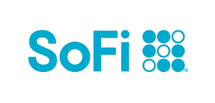
Offer Alert
- Competitive APY on both Savings and Checking
- No account fees
- Welcome bonus up to $300 (direct deposit required)
- Early access to direct deposits
- Tools to help you track savings goals
- Unlimited number of external transfers (up to daily transaction limits)
- ATM access
- FDIC insured (up to $2M with opt-in to SoFi Insured Deposit Program)
- Combo account only; no stand-alone savings or checking
- Maximum Savings APY requires direct deposit
- Overdraft protection requires monthly direct deposit minimum
- No branch access; online only
For those who plan to set up direct deposit with their new account, we think SoFi Checking and Savings is hard to beat. Not only does this savings account offer a strong APY, but the linked checking account earns above-average, too — which is a rare perk. Plus, there’s the opportunity for an up to $300 bonus and a long list of extra account features. Frankly, it’s the kind of combo that could make it worthwhile to switch banking relationships.
You can earn the maximum APY either by making direct deposits into checking or savings, or by depositing $5,000 or more every 30 days. Learn more.
Capital One 360 Performance Savings

- Competitive APY
- Branch access (if you live near one)
- No account fees
- Comfort of a well-known brand and reputation
- 24/7 customer support
- FDIC insured
- No ATM access
Capital One 360 Performance Savings checks all the boxes we look for in a high-yield savings account. But it also offers branch locations and Capital One Cafés where customers can seek in-person support (if you live near one). This makes it a great fit for those who want to reap the rewards of online banking but aren't quite ready to cut ties with brick-and-mortar banks.
CIT Platinum Savings
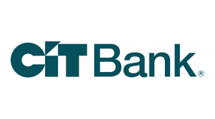
- Competitive APY
- No account fees
- Unlimited number of external transfers (up to daily transaction limits)
- 24/7 customer support
- FDIC insured
- Balance requirement for maximum APY
- No ATM access
- No branch access; online only
CIT Platinum Savings is a no-frills high-interest savings account that offers one of the highest APY’s on the market today — as long as you can maintain a $5,000 minimum balance. Plus, customers can make an unlimited number of transfers and withdrawals each month (many savings accounts have a monthly limit).
Western Alliance Bank High-Yield Savings Premier

- Competitive APY
- No monthly account fee
- Unlimited number of external transfers (up to daily transaction limits)
- FDIC insured
- Deposits and withdrawals can only be conducted via ACH transfer to/from an external bank account (limit to one linked account)
- No ATM access
- No wire transfers (inbound and outbound)
- No branch access; online only
Western Alliance Bank offers a higher APY than most high-yield savings accounts. Just know, this isn’t a typical savings account. Western Alliance is FDIC insured; therefore, deposits are perfectly safe up to applicable legal limits. The main drawback is that accounts don’t have many features. For example, you can only deposit and withdraw funds via ACH transfer to/from an external bank account. This account is solid for those who want a sky-high APY, but don’t mind a bare-bones banking experience.
LendingClub High-Yield Savings

- Competitive APY
- No monthly account fee
- ATM access
- Unlimited number of external transfers (up to daily transaction limits)
- FDIC insured
- ACH outbound transfers limited to $10,000 per day for some accounts
- No branch access; online only
For those looking to maximize the yield from their savings, the LendingClub High-Yield Savings account could be a smart choice for you. It offers a highly competitive APY, access to your money at thousands of ATMs across the United States, and no monthly account fees. There's a $100 minimum deposit requirement, but no ongoing balance requirement once the account is open.
Synchrony Bank High Yield Savings

- Competitive APY
- No monthly account fee
- ATM access
- ATM fee reimbursement
- FDIC Insured
- No branch access; online only
The Synchrony Bank High Yield Savings account has no minimum deposit and one of the highest APYs on our radar. It not only provides an ATM card with access to your cash at tens of thousands of free ATMs, but Synchrony will even reimburse a certain amount of out-of-network ATM fees. With a top-rated app and no maintenance fees, the Synchrony High Yield Savings account could certainly be worth a look.
EverBank Performance℠ Savings

- Competitive APY
- No monthly account fee
- Branch access (if you live near one)
- FDIC insured
- Same-day ACH transfers
- Free wire transfers (incoming only)
- ATM access only available via optional checking account
- Branches only in Florida
EverBank Performance Savings has one of the top APYs on our savings account radar, especially among accounts that require no minimum deposit. There are no maintenance fees, as well as multiple options to make deposits into the account. And for customers who live in Florida, there are several physical locations to visit.
CIT Savings Connect
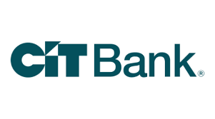
- Competitive APY
- No account fees
- Unlimited number of external transfers (up to daily transaction limits)
- 24/7 customer support
- FDIC insured
- $100 minimum deposit required
- No branch access; online only
CIT Savings Connect has among the highest APYs we've seen for an account with no account fees or minimum balance requirement (though a $100 initial deposit is required to open it). It's a great fit for those who want a top-notch APY and a flexible online banking experience.
Discover® Online Savings
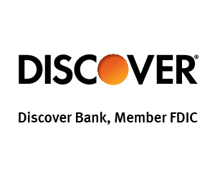
- Competitive APY
- No account fees
- Comfort of a well-known brand and reputation
- 24/7 customer support
- FDIC insured
- No ATM access
- No branch access; online only
Discover® Online Savings is a great pick for those who want a high APY and top-notch mobile app, but prefer to bank with a well-known brand. While it's not exactly the highest rate at every point in time, you can feel good that you’ll likely be earning a near-top-of-market rate for a while to come.
American Express® High Yield Savings
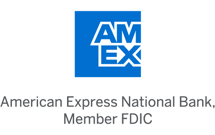
- Competitive APY
- No account fees
- Comfort of a well-known brand and reputation
- Unlimited number of external transfers (up to daily transaction limits)
- 24/7 customer support
- FDIC insured
- No ATM access
- No branch access; online only
American Express may not have the highest APY on our list, but it still sports a well-above-average rate and a strong reputation. This is a good fit for those who prefer the comfort of a well-known company like American Express that isn't likely to play games with your APY.
Marcus by Goldman Sachs Online Savings Account

- Competitive APY
- No monthly fees
- Comfort of a well-known brand and reputation
- Unlimited number of external transfers (up to daily transaction limits)
- 24/7 customer support
- FDIC insured
- Free wire transfers
- Same-day transfers up to $100,000
- No ATM access
- No branch access; online only
Marcus by Goldman Sachs Online Savings Account has a laundry list of features like a top-tier APY, no minimum balance hassle, FDIC insurance, and unlimited withdrawals. All the benefits of this premier account make it one of our favorites. Keep in mind Marcus is online-only with no ATMs or branches. If direct deposit is your game plan, then Marcus may be a great way to kickstart your savings.
Why you can trust us
Here at The Motley Fool, we've been helping people grow their wealth since 1993. Our philosophy is to provide useful, unbiased, jargon-free guidance that's easy for people to understand and implement.
Unlike many other websites, we do not allow companies to buy their way onto this page. The products you see here are what our experts believe are the best online savings accounts, whether we get compensated for them or not. Plus, most of the high-yield savings accounts we recommend on this page are used personally by our employees here at The Motley Fool, including myself. So you can feel confident that we have thoroughly evaluated and stand behind these products.
After all, there's a reason The Economist calls us "An ethical oasis" and Time Magazine says "Even millionaires get ideas from The Motley Fool." You can read more about our ratings methodology, our editorial integrity, and how we make money to learn more about us.
Our savings account methodology
At The Motley Fool Ascent, we rate savings accounts on a five-star scale (1 = poor, 5 = best). Our criteria? We dive deep into factors like APY, account minimums and fees, along with features that really make a difference -- think ATM access, linked checking accounts, or even branch access. We blend this with an evaluation of brand reputation and customer satisfaction to ensure you're getting the best.
Our aim is to maintain a balanced list featuring top-scoring products from reputable brands offering competitive APYs and standout features. See our full Ratings Methodology here.
-
Banks we monitor
Here are the 100+ financial institutions we've evaluated in our research:
Alliant, Ally, All America Bank, American First Credit Union, American Express® National Bank, Arvest Bank, Aspiration, Axos Bank, B2 Bank, Bank of America, Bank5 Connect, Bank7, Barclays, Bask Bank, Betterment, Bluevine, BMO, Bread Financial, Capital One, Carver Federal Savings Bank, Charles Schwab Bank, Chase, Chime, CIT, Citibank, Citizens Bank, Citizens Savings Bank, Columbia Bank, Connexus Credit Union, Consumers Credit Union, Copper, Cross River Bank, Customers Bank, Discover® Bank, E*TRADEEdward Jones, EverBank, Fidelity, Fifth Third Bank, First Foundation Bank, First Internet Bank of Indiana, First National Bank, First Tech Federal Credit Union, Flushing Bank, Freedom Bank, Generations Bank, GN Bank, Golden 1 Credit Union, Greenlight, Harborstone Credit Union, HSBC, Huntington Bank, Ivella, Jenius Bank, Kabbage by American Express, KeyBank, Laurel Road, LendingClub, Liberty Bank, Liberty Federal Credit Union, Marcus by Goldman Sachs, Mercury, Municipal Credit Union, Mutual of Omaha, NASA Federal Credit Union, Nationwide Bank, Navy Federal Credit Union, NBKC Bank, New York Community Bank, Northpointe Bank, Novo, OceanFirst Bank, Old National Bank, ONE Finance, OneUnited Bank, Oxygen, Pacific Western Bank, PNC Bank, Ponce Bank, Popular Direct, Presidential Bank, Prime Alliance Bank, Quontic, Radius, Raisin, Redneck Bank, Regions Bank, Relay, Republic Bank of Chicago, Revolut, Salem Five Bank, Sallie Mae, Santander Bank, SchoolsFirst Federal Credit Union, Simple, SoFi, Synchrony Bank, Tab Bank, TD Bank, Third Federal, Truist Bank, U.S. Bank, UFB, Upgrade, USAA, Valley Bank, Vanguard, Varo Bank, Vio Bank, Wealthfront, Wells Fargo, Western Alliance Bank, and Zeta.
FAQs
-
A high-yield savings account (HYSA) is a savings account that offers a much higher annual percentage yield (APY) than average and is usually (but not always) offered by an online-based financial institution.
-
The best savings accounts have:
- High APY: The top savings accounts should include a high APY in range with our picks.
- No monthly maintenance fee: Most of the best savings accounts won't charge a monthly maintenance fee.
- FDIC insurance: Whether you're putting money aside to build an emergency fund or wanting to earn more interest, security is important.
-
A high-yield savings account is a great place to keep your emergency fund, as well as funds for any short-term savings goals (like a vacation or a down payment on a home). And there is nothing wrong with having multiple savings accounts. In fact, it's generally a good idea to keep your emergency savings separate from the rest of your money.
Our Banking Experts
We're firm believers in the Golden Rule, which is why editorial opinions are ours alone and have not been previously reviewed, approved, or endorsed by included advertisers. The Ascent does not cover all offers on the market. Editorial content from The Ascent is separate from The Motley Fool editorial content and is created by a different analyst team.
